Examples of Permission Slips – Written consent has become an essential part of many institutional and organizational processes. This written consent often takes the form of a permission slip, a document of paramount importance that bestows authorization for specific activities. Whether in schools, hospitals, or even media production houses, permission slips ensure that all actions are performed with due consent, enhancing the ethos of transparency and respect for individual rights.
Understanding the Importance of Permission Slips
Permission slips serve as an embodiment of informed consent, a cornerstone of ethical conduct. They hold significant importance when a risk might be present, no matter how minor. With this documented agreement, organizations and institutions can avoid potential legal ramifications while ensuring the safety and rights of all parties involved.
The Purpose of a Permission Slip
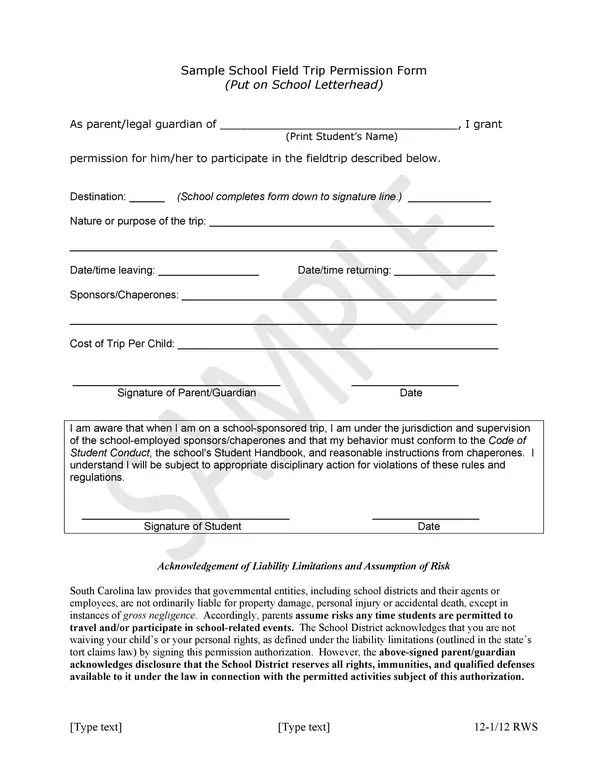
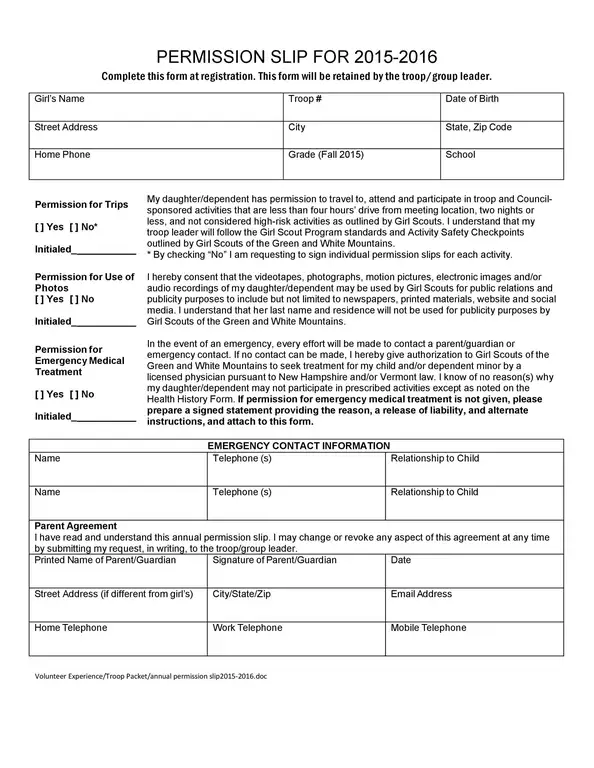
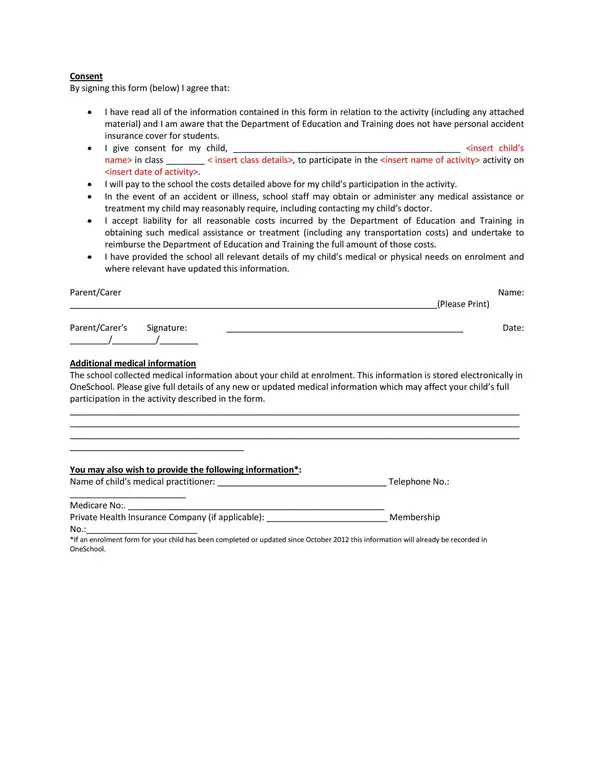
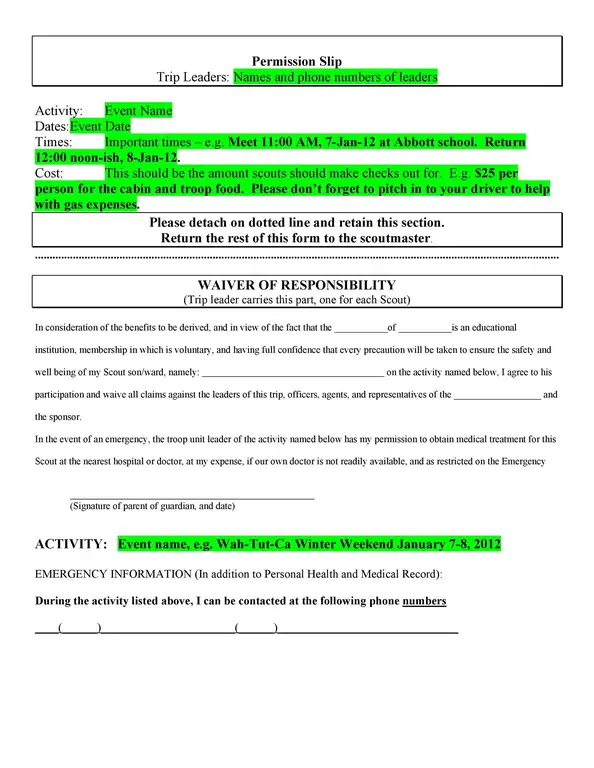
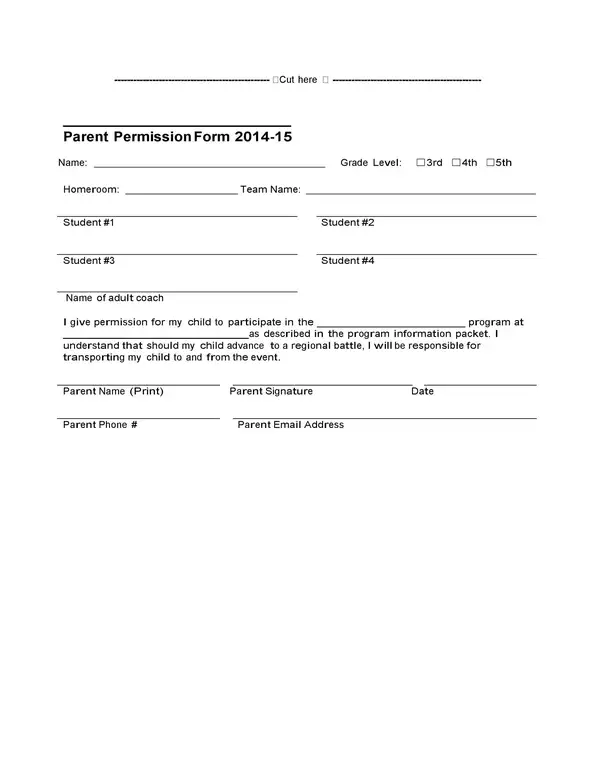
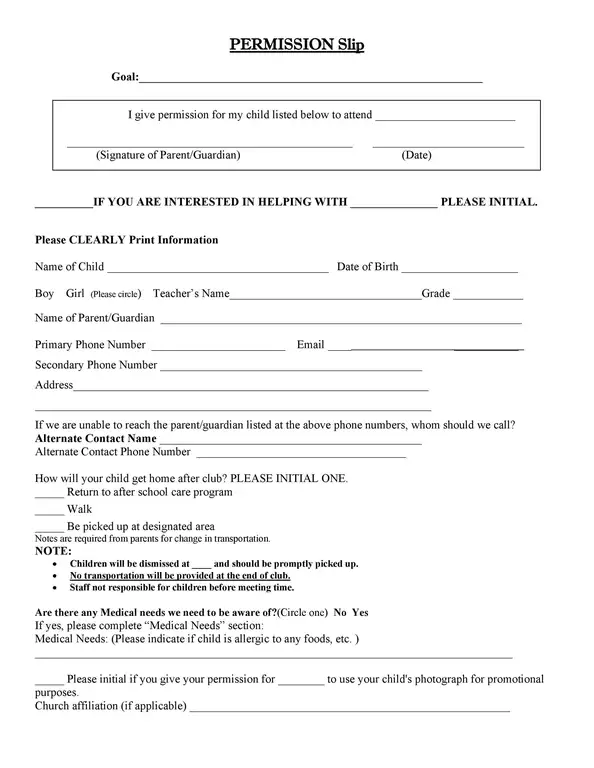
A permission slip serves as a legal document that affirms the consent of a guardian or parent for a minor to participate in a particular activity. Its primary purpose is to protect the organization or individual conducting the event from liability in case of an accident.
According to the American Camp Association, a permission slip is a critical legal document necessary when a minor is involved in an activity away from their school or organization.
Informed Consent
Permission slips must provide a comprehensive overview of the activity to ensure that the consenting party understands what they are agreeing to, known as informed consent. This overview typically includes the activity’s nature, purpose, duration, and associated risks.
According to the American Psychological Association, informed consent is crucial to ensure that the person granting permission knows an activity’s potential risks and benefits, which apply to medical procedures and school field trips.
Emergency Contact Information
Including a section in the permission slip for emergency contact information is a critical safety measure. It can ensure that the correct individuals are contacted promptly in an emergency. This inclusion is more of a best practice than a legal requirement, but it is essential to any permission slip for an activity involving potential risks.
Compliance with Privacy Laws
Suppose a permission slip involves collecting, using, or disclosing personal information. In that case, it must comply with relevant privacy laws, such as the Family Educational Rights and Privacy Act (FERPA) in the United States or the General Data Protection Regulation (GDPR) in Europe.
Understanding and abiding by the legal requirements and considerations when creating a permission slip is vital to ensure its legality and effectiveness. Consulting with a legal professional can help ensure your document is legally sound and fit for purpose.
Sourche: U.S. Department of Education. (2021). “Family Educational Rights and Privacy Act (FERPA).” https://www2.ed.gov/policy/gen/guid/fpco/ferpa/index.html.
Elements of a Permission Slip
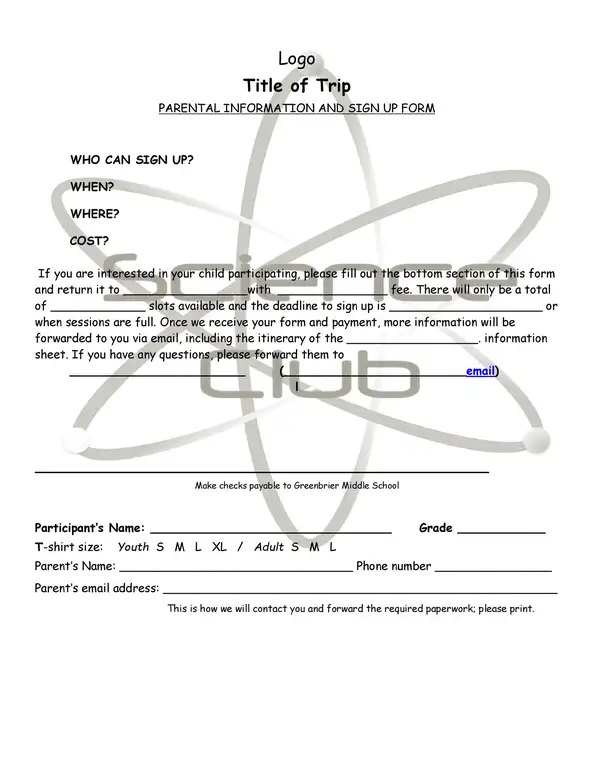
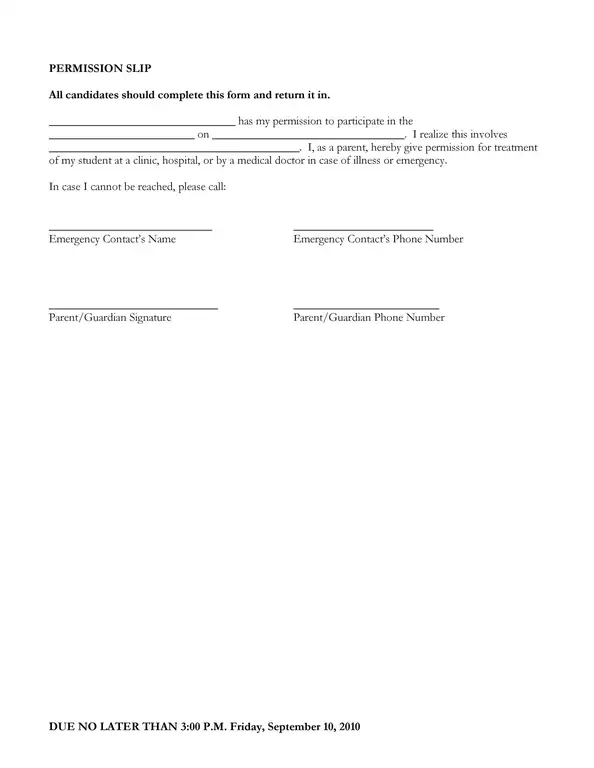
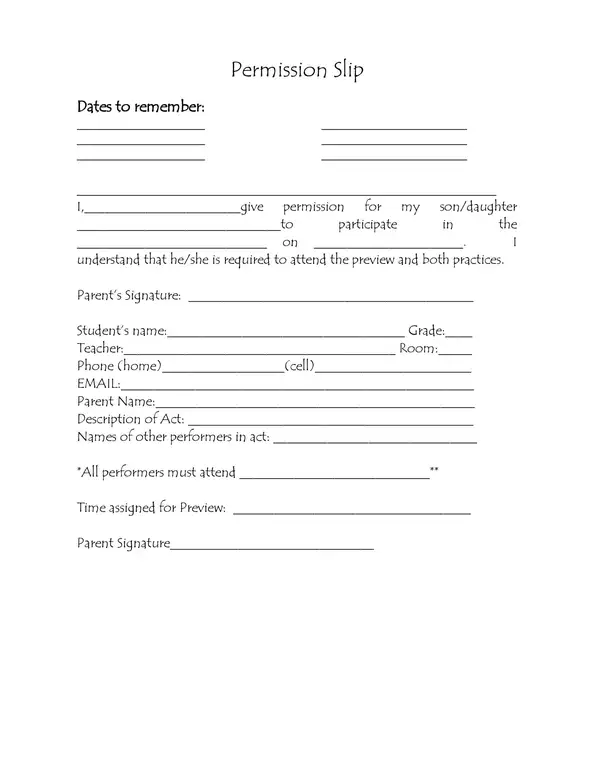
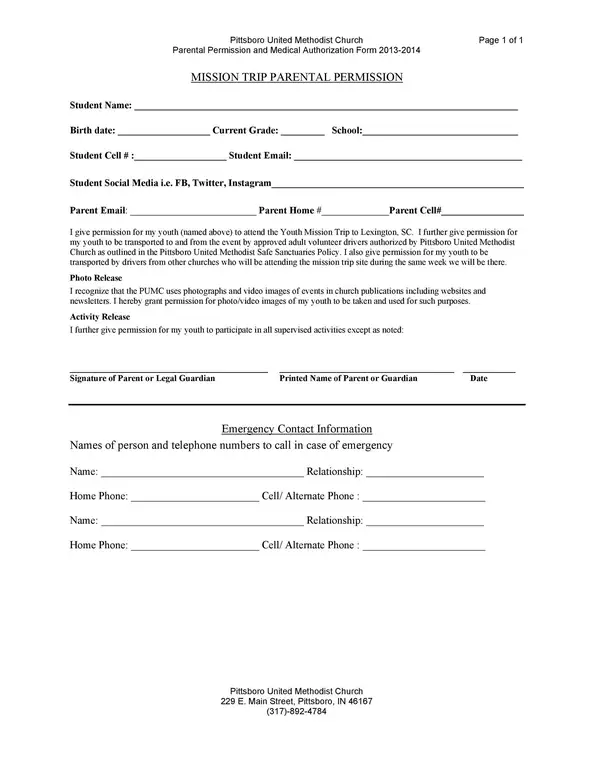
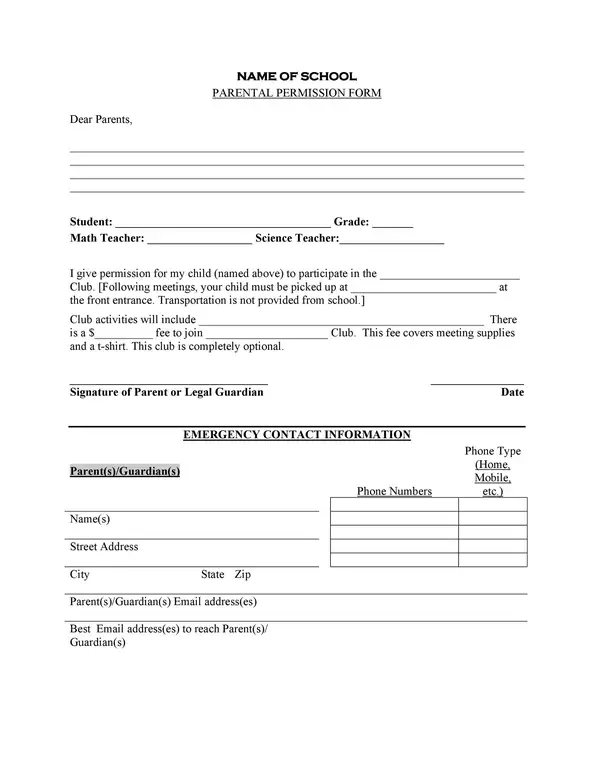
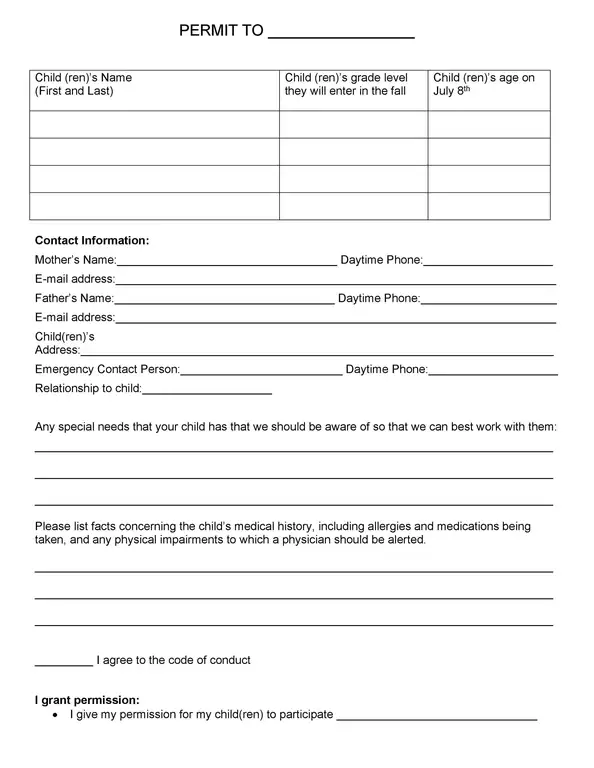
Creating a comprehensive permission slip is critical to organizing any event or activity involving minors. A well-structured includes all the data that guardians or parents need to make an informed decision about their child’s participation. The following are the key elements of a permission slip:
- Title and Introduction:The title should clearly state that the document is a permission slip for a specific activity or event. The introduction should then provide a brief overview of the organization conducting the event and the purpose of the permission slip.
- Activity Description:Detail the activity’s nature, date, time, location, and purpose. This information helps parents or guardians understand what they are giving consent for.
- Consent Statement:This is a crucial element where the parent or guardian explicitly agrees to their kid to participate in the activity. The statement should be clear and straightforward, leaving no room for ambiguity.
- Emergency Medical Authorization:In the event of a medical emergency, it is crucial to have a parent or guardian’s permission to give necessary treatment to their kid. It should indicate this consent, including specific permissions for transportation to a medical facility if necessary.
- Liability Waiver:This part of the permission slip protects the organization or individual conducting the activity from legal responsibility in the event of an accident. It is essential to ensure that the language used in this section is clear and legally sound.
- Health Information:This section should ask for any health-related information that could be crucial during the activity, such as allergies, current medications, or chronic illnesses. This information helps to ensure the safety and well-being of all participants.
- Contact Information:Include a section for the parent or guardian to provide their contact details. It should also ask for emergency reference information.
- Signature and Date:The permission slip should have a place for the parent or guardian to sign and date the form, confirming their understanding and consent.
By ensuring that these key elements are part of your permission slip, you can create a comprehensive document that provides all the details required for informed consent.
The Different Types of Permission Slips
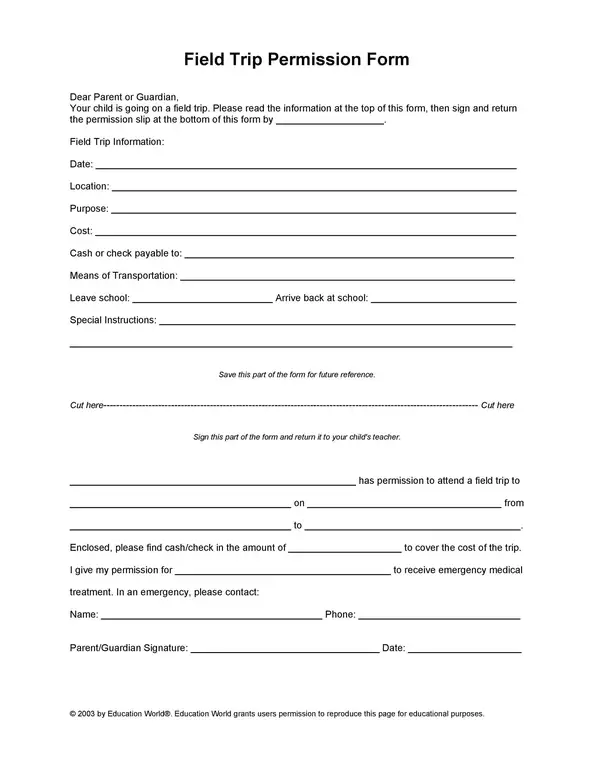
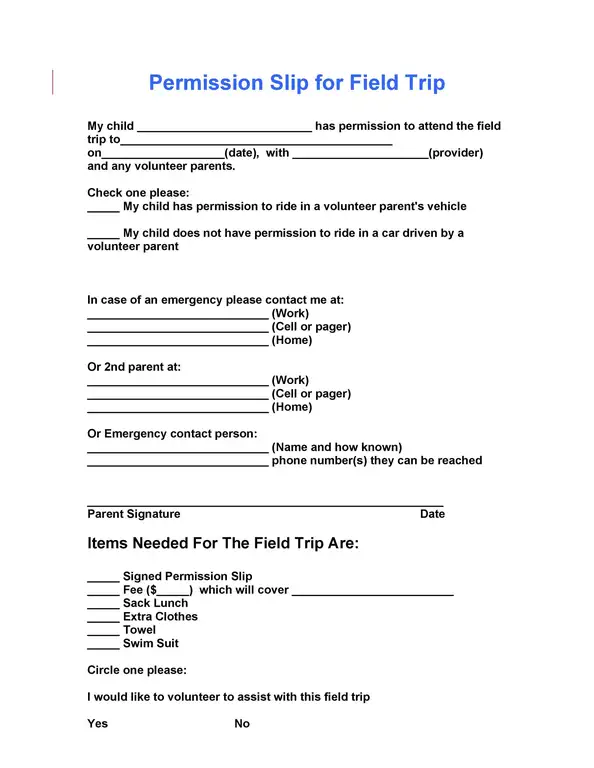
The world of permission slips is more uniform than one might think. There are, in fact, several different types of these crucial documents, each tailored to specific circumstances and types of activities. Below, we explore some of the most common types:
- Field Trip Permission Slips:Perhaps the most familiar type of permission slip, these are used by schools to obtain consent from parents or guardians for students to participate in off-campus activities. These slips typically detail the destination, date, departure and return times, transportation methods, and what the students should bring.
- Medical Consent Forms:While technically a type of permission slip, medical consent forms serve a unique purpose: they grant healthcare providers the authority to deliver treatment. These forms are essential for field trips or events with potential injury or illness.
- Media Consent Forms:Media consent forms are becoming increasingly important in an era where photos and videos can be widely distributed with a single click. They permit organizations to use a minor’s image or voice in promotional material or social media.
- Activity-Specific Permission Slips:Certain activities may require specific permission forms due to their nature. For example, permission slips for extreme sports like rock climbing or white-water rafting might include more detailed liability waivers and safety information.
- Overnight Trip Permission Slips:Permission slips will require more detailed information for trips involving overnight stays, such as camping trips or school retreats. It could include sleeping arrangements, meal plans, and a comprehensive itinerary.
- Walking Field Trip Permission Slips:These permission slips are used when students walk from the school to a nearby location. They often have more straightforward requirements, simply explaining the destination, purpose, and time frame.
By understanding the different types of permission slips, you can ensure that you use the correct form for your event or activity, providing a clear and accurate context for parents or guardians to give informed consent.
Steps to Create a Permission Slip
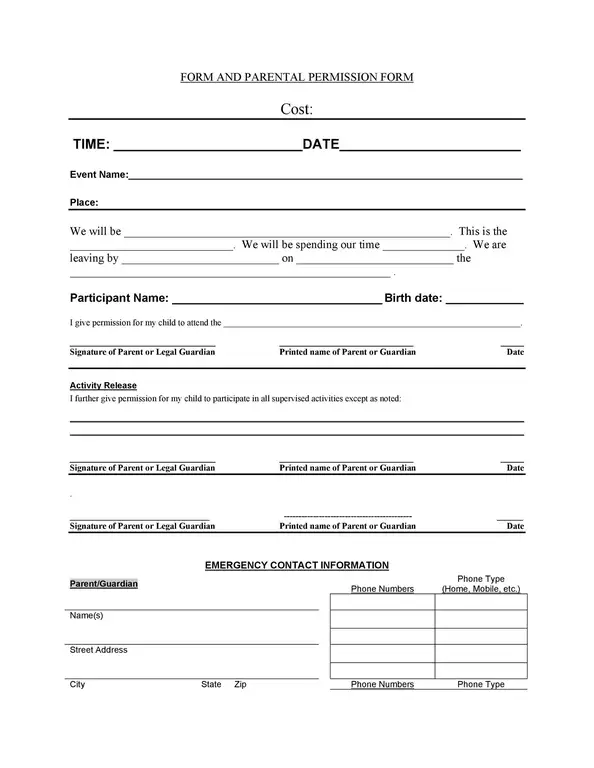
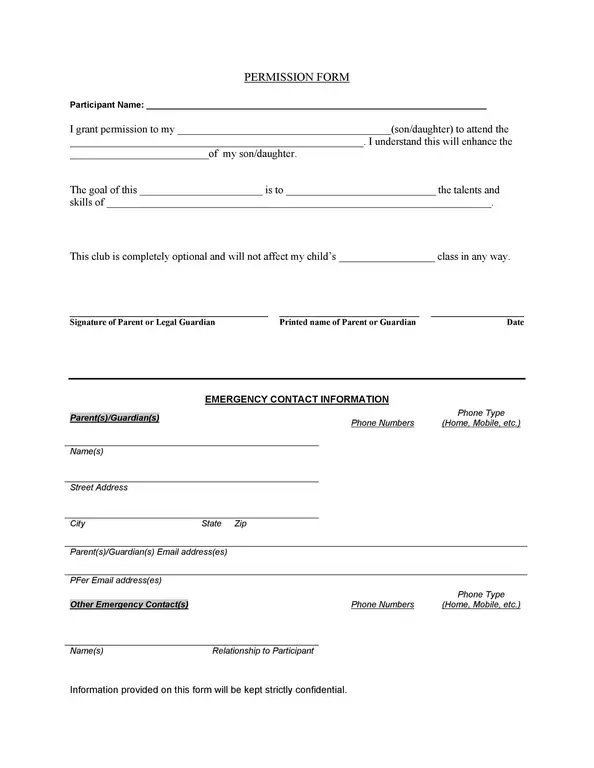
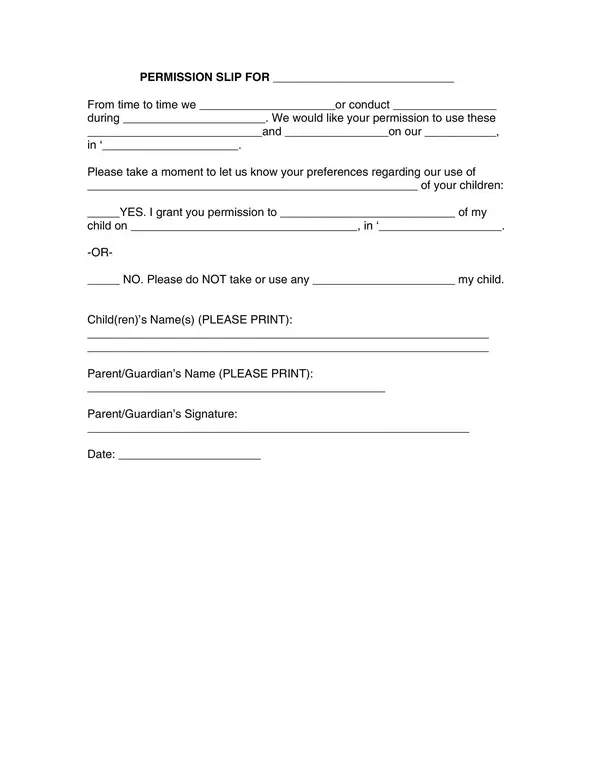
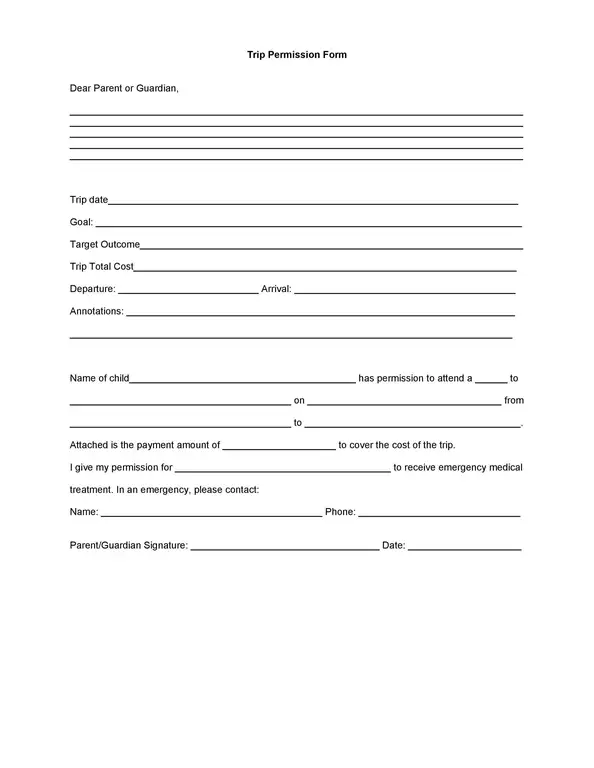
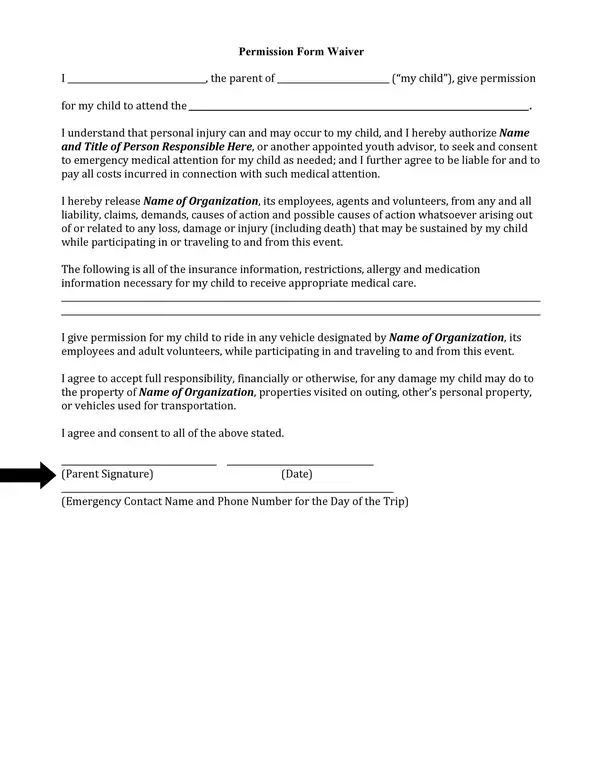
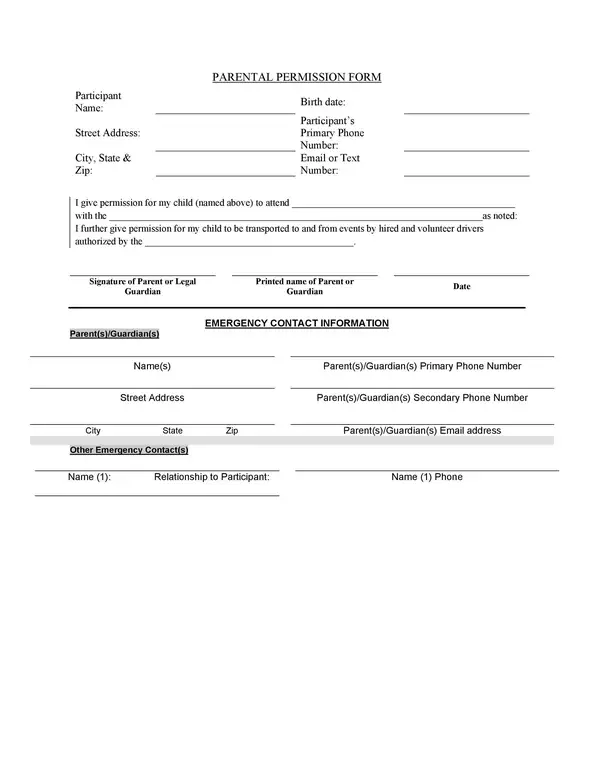
Crafting an effective permission slip is not merely about meeting the required standards but rather about creating a document that clearly outlines the details of the activity and the responsibilities of all parties involved. Here are some essential steps that can be followed while creating a permission slip:
- Define the Purpose: The first step is to clarify the reason for the permission slip. The purpose should be clearly stated at the beginning of the slip, Whether for a school field trip, a research study, or media usage.
- Provide Detailed Information: The permission slip should contain all necessary details about the event or activity. It includes the date, time, location, duration, nature of the event, any potential risks involved, and what will be expected of the person giving their consent.
- State What is Being Permitted: It is essential to mention explicitly what the individual agrees to by signing the permission slip. It could range from allowing their child to participate in a school trip to granting researchers the right to use their data.
- Include Emergency Contact Information: Including a section for emergency contact information for activities involving potential risks is crucial. It ensures that the organizers can reach someone who can make decisions on behalf of the individual if necessary.
- Include a Signature Line: A signature line for the individual granting permission is a must. It signifies that they have read, understood, and agreed to everything mentioned in the permission slip.
- Legal Review: It is advisable to have the permission slip reviewed by a legal professional. It ensures that it complies with all relevant laws and regulations and that the rights and responsibilities of all parties are adequately protected.
Following these steps can help craft a comprehensive permission slip that meets its objective while ensuring all parties know their roles and responsibilities.
Dos and Don’ts of Permission Slip Writing
When crafting a permission slip, it is crucial to understand the right practices to follow and the common pitfalls to avoid. Following these dos and don’ts can ensure you create an effective, legal, and fair document for all parties involved.
Dos
- Be Specific: Ensure you include all pertinent details about the activity, including what is being permitted, the nature of the event, the time, date, location, and any associated risks. It gives the person giving permission a clear understanding of their agreement.
- Use Clear Language: Avoid using jargon or overly complex language. The permission slip should be easily understandable by anyone who reads it, regardless of their level of education or familiarity with the subject matter.
- Include a Signature Line: A permission slip must include a line for the person permitted to sign, demonstrating that they have read and understood the document and agree to the outlined terms.
- Follow Legal Guidelines: Comply with all relevant laws and regulations in your jurisdiction. If in doubt, consult a legal professional to ensure your permission slip is legally sound.
Don’ts
- Don’t Be Vague: Avoid vague language that could lead to confusion about the terms of the permission being granted. Ambiguity can lead to misunderstandings and potential legal disputes down the line.
- Don’t Ignore Privacy Rights: Be respectful of privacy rights. If the permission slip involves collecting or using personal information, clearly state how this data will be used and protected.
- Don’t Forget to Review: Don’t rush to distribute the permission slip without thoroughly reviewing it for clarity, completeness, and legal compliance. It can help prevent issues and misunderstandings later on.
- Don’t Remember Emergency Information: If the permission slip is for an activity that could potentially involve risk (such as a school field trip), always include a section for emergency contact information.
Permission slips can protect the rights of all parties involved and provide a clear framework for what is permitted. By following these dos and don’ts, you can ensure your permission slip serves its purpose effectively.
Legal Requirements and Considerations for Permission Slips
Permission slips are a protective measure for schools and organizations, limiting their liability and ensuring they have obtained informed consent for activities involving minors.
However, these documents must adhere to certain legal requirements and considerations to effectively serve this purpose. These basics include specific examples and references to laws and regulations in different jurisdictions.
- Informed Consent: A primary legal requirement for permission slips is to provide enough detail to facilitate informed consent. Parents or guardians should be able to understand the nature of the activity, the potential risks involved, and their child’s rights and responsibilities. Provide this information to ensure the consent form is valid.
- Specificity: Vague or broad language can compromise the effectiveness of a permission slip. For instance, in the case of Hojnowski v. Vans Skate Park (2006), the New Jersey Supreme Court ruled that a waiver signed by a parent, which released the park from all future liability, was unenforceable. The court held that parents could not sign away their children’s future rights to sue for negligence.
- Understanding Local Laws: Laws regarding parental consent and liability waivers can vary significantly between jurisdictions. In some states, for example, liability waivers for minor participants are unenforceable (e.g., Virginia and Arizona), while in others, such as Colorado and Florida, these waivers are generally enforceable. It is crucial to understand and follow the specific laws in your jurisdiction.
- Emergency Medical Treatment: Some jurisdictions have specific laws granting schools or organizations the right to authorize emergency medical treatment for a minor. In California, for example, the Family Code Section 6910 allows a school to consent to a minor student’s medical, dental, and surgical care under certain circumstances.
- Consideration of Privacy Laws: When constructing permission slips that might involve capturing and sharing photos or videos of minors, privacy laws like COPPA (Children’s Online Privacy Protection Act) in the U.S. must be considered. These laws regulate how images and information about children under 13 can be collected and shared online.
- Legally Binding Signatures: To make a parent or guardian must sign it. Digital signatures are generally accepted, but different jurisdictions may have different requirements for what constitutes a legally valid digital signature.
As with any legal document, when creating a permission slip, it is advisable to seek legal counsel to ensure compliance with all relevant local, state, and federal laws.
Templates: Examples of Permission Slips
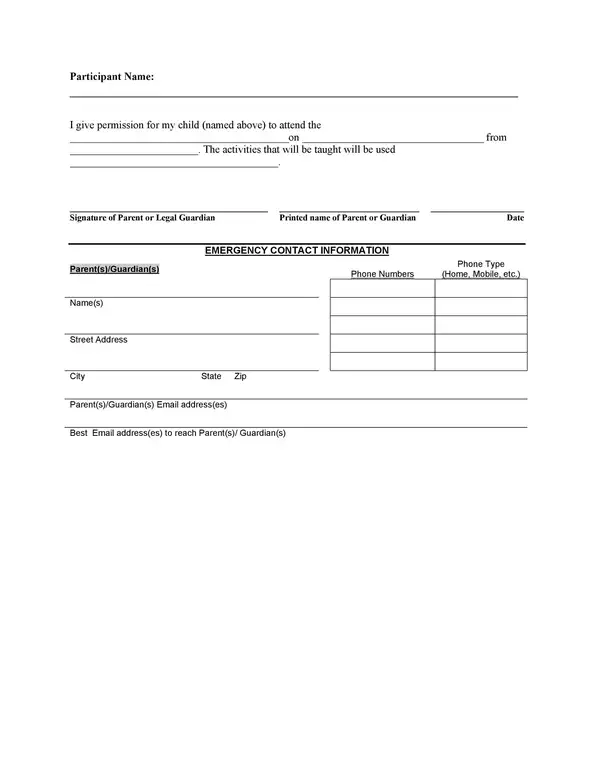
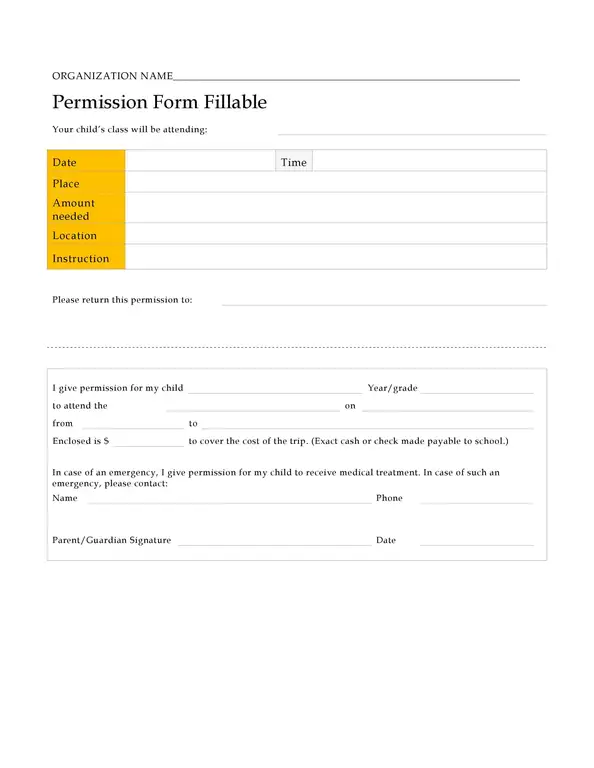
When crafting permission slips, having a clear structure and understanding of what to include is crucial. Templates can serve as an excellent starting point, providing a broad framework that can be tailored to suit specific needs.
Here, we explore a variety of common permission slip templates, each suited to different situations.
Field Trip Permission Slip Template
Field trips are common in schools and youth organizations, necessitating a standard permission slip. This template generally includes the following sections:
- Child’s name
- Date and destination of the trip
- Detailed Itinerary
- Transportation method
- Supervising adults
- Any costs involved
- Emergency contact information
- Parent/guardian signature and date
Media Release Permission Slip Template
With technology being a significant part of everyday life, schools and organizations often capture and share photos or videos of events. In such cases, a media release permission slip is required. Key elements of this template include:
- Child’s name
- Specific details about the media to be captured (e.g., photos, videos)
- The purpose of capturing the media
- Where and how the media will be used
- An option for parents/guardians to consent or decline
- Parent/guardian signature and date
Medical Treatment Permission Slip Template
Schools and organizations often require a permission slip granting them the right to authorize emergency medical treatment. Such a form generally includes:
- Child’s name
- Parent/guardian contact information
- Emergency contact information
- Preferred medical professional/hospital
- Any known allergies or existing medical conditions
- Parent/guardian signature and date
Extra-curricular Activity Permission Slip Template
Due to their nature, extra-curricular activities, like sports or clubs, often need specific consent. A permission slip for such activities typically includes the following:
- Child’s name
- Description of the activity
- Duration and location of the activity
- Any associated costs
- Risks associated with the activity
- Emergency contact information
- Parent/guardian signature and date
Examples of Permission Slips provide a foundation for designing your permission slips. They should be adjusted to meet the specific requirements of the activity and adhere to relevant local, state, and federal laws. As a best practice, consider seeking legal counsel to ensure your permission slips are legally sound.
Best Practices for Designing and Formatting Permission Slips
Creating permission slips that are both functional and aesthetically pleasing requires a balance between essential details and a clean, simple design. Here are some best practices for designing and formatting these critical documents.
- Keep it Concise
While you want to include all pertinent information, only overwhelm the reader with a little text, and aim to convey the necessary details as clearly and concisely as possible. A wall of text can be off-putting and may deter readers from thoroughly reviewing the document.
- Highlight Key Information
Use bold, italic, or underlined text to highlight details such as dates, times, locations, and items to bring. Make sure that the crucial information is easily identifiable at a glance.
- Use Bullets or Numbered Lists
Consider using bullets or numbered lists if there are multiple steps to follow or a list of items to bring. These can make the information more digestible and easy to follow.
- Include Appropriate White Space
Ensure your document does not appear cluttered by using white space effectively. It can make the permission slip more comfortable to read and less intimidating.
- Use Simple and Clear Language
Avoid using jargon or complex terms that may confuse the reader. Keep the language simple and clear. Remember, all recipients should easily understand the permission slip.
- Ensure Legibility
Choose fonts that are easy to read. While stylistic fonts may look attractive, they can sometimes take time to decipher, especially when printed in smaller sizes.
- Organize Information Logically
Group related information together and present the details in a logical sequence. For example, event details should be grouped, followed by the section for emergency contact information, and finally, the consent portion.
- Make Use of Templates
Examples of Permission Slips can be a useful starting point for creating well-designed permission slips. They often come pre-formatted with sections you can easily fill in with your information.
With these best practices, you can design permission slips that are aesthetically pleasing and effectively communicate necessary information, making the process smoother for everyone involved.
Customizable Permission Slip Templates: A Time-Saving Tool
Customizable templates simplify the process of creating permission slips. With basic elements in place, you need only modify the details to fit your needs, saving time and ensuring consistency.
Making Permission Slips Accessible and Understandable
Accessibility and comprehension are vital when creating permission slips. They must be written in clear, simple language that the intended audience can understand, ensuring that all parties have the same understanding of what is being agreed upon.
Digital Transformation of Permission Slips
Many organizations have turned to online forms for permission slips in the digital age. This evolution streamlines the process, improves record-keeping, and reduces environmental impact.
Permission Slips: Protecting Rights, Ensuring Safety
Permission slips act as safeguards, protecting the rights of those involved while ensuring their safety. They testify to the importance of communication, transparency, and informed consent in our society.
Potential Consequences of Not Obtaining Proper Permission Through Permission Slips
Bypassing the procedure of obtaining permission through properly crafted slips is a tempting shortcut, especially given the seemingly bureaucratic nature of the process. However, such negligence could have severe consequences, particularly regarding legal implications and associated risks.
Legal Liability
Without a duly signed permission slip, the organization or the individual conducting the activity becomes more vulnerable to legal disputes. For example, suppose an injury occurs during a field trip or an extra-curricular activity. In that case, the absence of a properly executed permission slip may lead to lawsuits alleging negligence or improper supervision. Schools and organizations rely on these forms to protect against such claims.
Violation of Privacy Laws
Failure to obtain necessary permissions, particularly in the case of media release forms, can lead to violations of privacy laws. Unauthorized use of a child’s image for promotional or other purposes can result in legal actions against the organization for invasion of privacy. The consequences can be severe, including hefty fines and damage to the organization’s reputation.
Breaches of Trust
Permission slips also serve as an important communication tool between the organization and the parents or guardians. Neglecting this process can lead to breaches of trust, as parents or guardians may feel that their rights to make decisions regarding their child’s activities and safety are being overlooked.
Lack of Medical Authorization
In a medical emergency, time is often of the essence. If a school or organization lacks a duly signed permission slip, it could delay potentially life-saving treatment while the necessary authorizations are sought. It could endanger the child’s life and expose the organization to legal repercussions.
Effectively Communicating Potential Risks to Parents or Guardians
When it comes to permission slips, one of the crucial aspects is effectively communicating the potential risks involved in an activity to the parents or guardians. It helps them make informed decisions regarding their child’s participation. Here are some guidelines for effectively conveying this critical information.
- Be Specific About the Activity:
Do not just broadly mention the activity. Be specific about what it entails. For example, instead of simply stating a ‘field trip,’ specify whether it is a visit to a science museum, a hiking excursion, or a swimming trip.
- Identify Potential Risks:
Detail the potential risks associated with the activity. If it is an outdoor trip, explain the possibility of injuries due to falls, or if it is a science experiment, describe any chemical-related risks.
- Detail Safety Measures:
Reassure parents or guardians about the safety measures in place. It could include teacher supervision, first-aid facilities available, or safety equipment provided for the activity.
- Use Clear and Simple Language:
Avoid using technical jargon while explaining potential risks. The aim is to make parents or guardians understand the risks involved clearly.
- Encourage Open Communication:
Encourage parents or guardians to ask questions if they have any concerns about the activity or the potential risks involved.
- Update Information:
Ensure all the risk-related information is current and relevant to the activity. For instance, if changes in the event affect the risk factor, it is important to communicate those changes immediately.
Communicating potential risks honestly, thoroughly, and clearly can help parents or guardians make informed decisions and feel more at ease about their child’s participation in an event or activity. It also builds trust, showing the school or organization’s commitment to student safety and transparency.
Conclusion
Examples of Permission Slips – Permission slips, while simple on the surface, play a pivotal role in many aspects of our lives. Whether it is a school field trip, a medical procedure, or using one’s likeness, these documents ensure that all parties have a shared understanding and agreement on what is involved. Therefore, understanding how to create and use them effectively is essential.

The content creator team at calipsotree.com is dedicated to making topics accessible to everyone, with over 9 years of experience in writing and breaking down complex concepts into easy-to-understand articles that answer readers’ financial questions.








